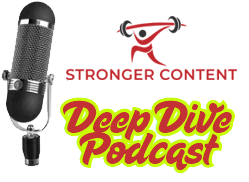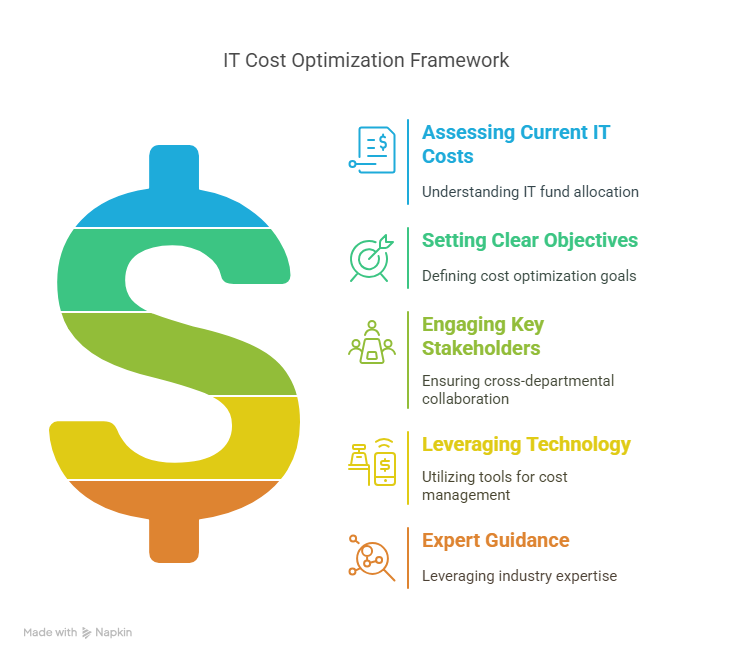MAY NOT BE REPRODUCED WITHOUT PERMISSION

IT cost optimization goes well beyond traditional cost-cutting measures, emphasizing a strategic approach to align IT investments with your business objectives. By focusing on efficiency, innovation, and value creation, you can achieve sustainable cost reductions while driving business outcomes.
Understanding IT Cost Optimization as a Strategic Discipline
Overspending on IT resources is rampant and it may be costing you millions of dollars. Our research into actual spending shows that large organizations overpay for 89% of their IT purchases. Gartner estimates that 30% of SaaS spend is toxic, wasted on unused licenses and features that aren’t being used.
Why? There are several key reasons.
Pricing is wildly inconsistent. Licensing terms are convoluted. Vendors have lock-in leverage and highly trained sales teams that have access to data you don’t.
As the volume and complexity of IT purchases increase, your IT cost optimization strategies become more important than ever. You need a strategic framework, discipline, and approach to keep spending in check.
Strategic Frameworks for IT Cost Optimization
IT cost optimization strategies should include a framework including:
- Assessing current IT costs: Understanding where and how IT funds are allocated.
- Setting clear objectives: Defining what cost optimization means for your organization, whether it’s reducing waste, improving efficiency, or reallocating resources.
- Engaging key stakeholders: Ensuring cross-departmental collaboration to align IT strategies with broader business goals.
- Leveraging technology: Utilizing tools and platforms to track and manage costs effectively.
- Expert guidance: Leveraging industry benchmarking and expertise to achieve best-in-class pricing.

These steps create the necessary structure for identifying areas of opportunity and implementing impactful changes. Applying this framework consistently, enterprises have the foundation to optimize costs. For example, organizations deploying NPI solutions see between 15% and 25% savings on large IT purchases.
Key Strategies for Effective IT Cost Optimization
Deploying a few key strategies can help you better control costs and right-size your IT assets.
Prioritizing High-Impact IT Investments
IT cost optimization should start by focusing on your biggest investments that have the biggest impact on your business. By focusing your resources on these initiatives, you can ensure your IT spending directly supports your strategic goals.
Cost optimization is not about reducing your capabilities, but it is about making sure you have the right IT solutions for your business at the lowest possible cost.
Conducting a software license position assessment can identify significant opportunities for cost reductions and reduce potential liabilities. Many businesses find they have unallocated licenses that are adding to costs or they are paying for licenses with features many employees aren’t using. For example, does everyone in your organization need a Microsoft E5 license or can some employees do their job with a less-expense E3 or even M365 license?
Cloud Cost Management and Optimization
Cloud computing has reshaped IT infrastructure and offers flexibility and scalability. However, it also creates significant challenges in cost management. In 2024, it’s estimated that companies spent $805 billion, and that number is expected to double by 2028.
Reigning in these costs takes more than just robust governance policies and real-time visibility into spending. You need to identify overprovisioned, underutilized, and redundant services to reduce expenses. You also need to audit your contracts well before renewal time to make sure they are right-sized and optimized for cost savings.
Automation for Operational Cost Reduction
Automation creates operational efficiencies and reduces your operating costs. Routine IT operations like backups, patch management, system monitoring, and resource allocation can lower labor (and cloud) expenses and reduce the risk of error.
Software Licensing and Subscription Management
The number of software licenses and subscriptions has grown dramatically. The average enterprise today has some 67 different applications installed. About 10% have more than 100. In addition, most departments have their own apps — as many as 200 or more companywide. App sprawl is real and costly.
Migrating to the cloud and constantly changing SKUs and licensing types only adds to the complexity.
Yet, the majority of companies say they do not have comprehensive visibility into all of their licenses and subscriptions. As your tech stack increases, it becomes harder to manage all of it and waste is rampant. A study of six million customers showed that nearly half of all software licenses were not even being used. That’s about half a billion dollars worth of waste.
Audits can help you identify areas of waste and adjust contracts as necessary.
Having comprehensive insight into your IT licenses is critical, especially if you are close to renewal time. Vendors are being more aggressive in launching software license audits. Multi-million-dollar claims are becoming the norm and putting your business at risk.
Vendor and Contract Negotiation for Better Terms
Engaging in competitive bidding helps you get better pricing, but you may still be getting a bad deal. How do know? Vendors for large enterprises rarely have fixed rate cards and they know what businesses are willing to pay.
On the other hand, you likely have limited or no insight into what others are paying for the same services. You need benchmarking intelligence, based on real-world negotiations, to understand what constitutes a fair price. At the same time, you need insight into the terms and conditions and where vendors are willing to negotiate.
Such market intelligence can produce significant savings by maximizing your IT contract negotiation leverage. An NPI Vantage subscription allows you to submit purchase quotes to our SOC 2 certified portal and receive a custom Fair Market Value Report, vendor pricing strategy, and negotiation guidance. Clients have achieved savings like these:
- AWS: $86 million
- AT&T: $5 million
- Microsoft: $9 million
- IGM: $12 million
- Databricks: $10 million
- Cisco: $7 million
- VMware: $24 million
- SAP: $15 million
- Salesforce: $3 million
Cross-functional Collaboration for Cost Optimization Success
Maximizing your IT cost optimization strategies requires a collaborative approach involving multiple departments. Best practices include:
- Finance and IT Collaboration: Aligning budget planning with IT strategy to ensure resources are allocated effectively.
- Engaging End Users: Incorporating feedback from employees and customers to identify areas where IT investments can deliver the greatest value.
- Leadership Buy-In: Securing support from executive leadership to drive a culture of cost-conscious decision-making.
Using Benchmarking and Performance Metrics to Track IT Cost Optimization
As W. Edwards Deming famously said, “You can’t manage what you can’t measure.” Measuring the success of your IT cost optimization strategies is important for continuous improvement. Establishing KPIs as you negotiate and review your software licenses and contracts will help you understand where you are spending (and overspending) on IT assets.
Comparing your performance against industry benchmarks can help you identify opportunities for further optimization.
Managing Risks in IT Cost Optimization Efforts
With IT cost optimization in mind, there are also risks. It can be easy to overemphasize your optimization efforts and limit access to some of the IT tools your employees need to work efficiently and innovate. It’s a constant balancing act to make sure your team has the tools they need without overspending.
Companies also frequently underestimate the hidden costs, such as the cost of transitioning to new technologies, downtime, and training. Failing to manage these costs and changes in your organization can add up quickly.
Organizations need to focus on the total cost of ownership (TCO) at the same time they are optimizing spend.
How to Sustain IT Cost Optimization Over Time
Sustaining IT cost optimization over time requires a culture of continuous improvement and careful management of ongoing expenses. You need to regularly evaluate your tech stack, employee’s needs, and new technology.
Cost optimization also takes a holistic approach. Team members must understand how to implement cost-saving measures.
Leveraging Strategic IT Cost Optimization with NPI
Effective IT cost optimization is not a one-time initiative. It is an ongoing discipline that requires strategic planning, collaboration, and innovation. By implementing the right IT cost optimization strategies, you can achieve significant cost reductions while maintaining and enhancing your IT capabilities.
Stop wasting money by overpaying for software licenses and IT infrastructure.
We help large enterprises tackle their toughest IT sourcing challenges and make sure you’re not overpaying. Our 300+ IT consultants, analysts, and vendor-specific category experts have helped companies save billions of dollars on IT and telecom spend.
With NPI, you get:
- Transaction-specific Price Benchmark Analysis and Negotiation Intel for your IT purchases
- EA purchase and renewal optimization for Microsoft, SAP, Oracle, Salesforce, and more
- User-based SaaS license optimization across your tech stack
- License compliance, including license position assessments, and software license audit defense
- Telecom carrier contract optimization for cloud, mobile, wireline/network, and web conferencing
NPI is not a reseller. Our only goal is to make sure you have the tools you need without overspending. We provide an objective and independent assessment that focuses on your best interest. Our proven methodology and expertise regularly deliver seven- and eight-figure cost savings for enterprise businesses.
Eliminate IT overspending and maximize the effectiveness of your IT procurement team. Contact NPI today to learn how we can support your journey to smarter, more strategic IT spending.

